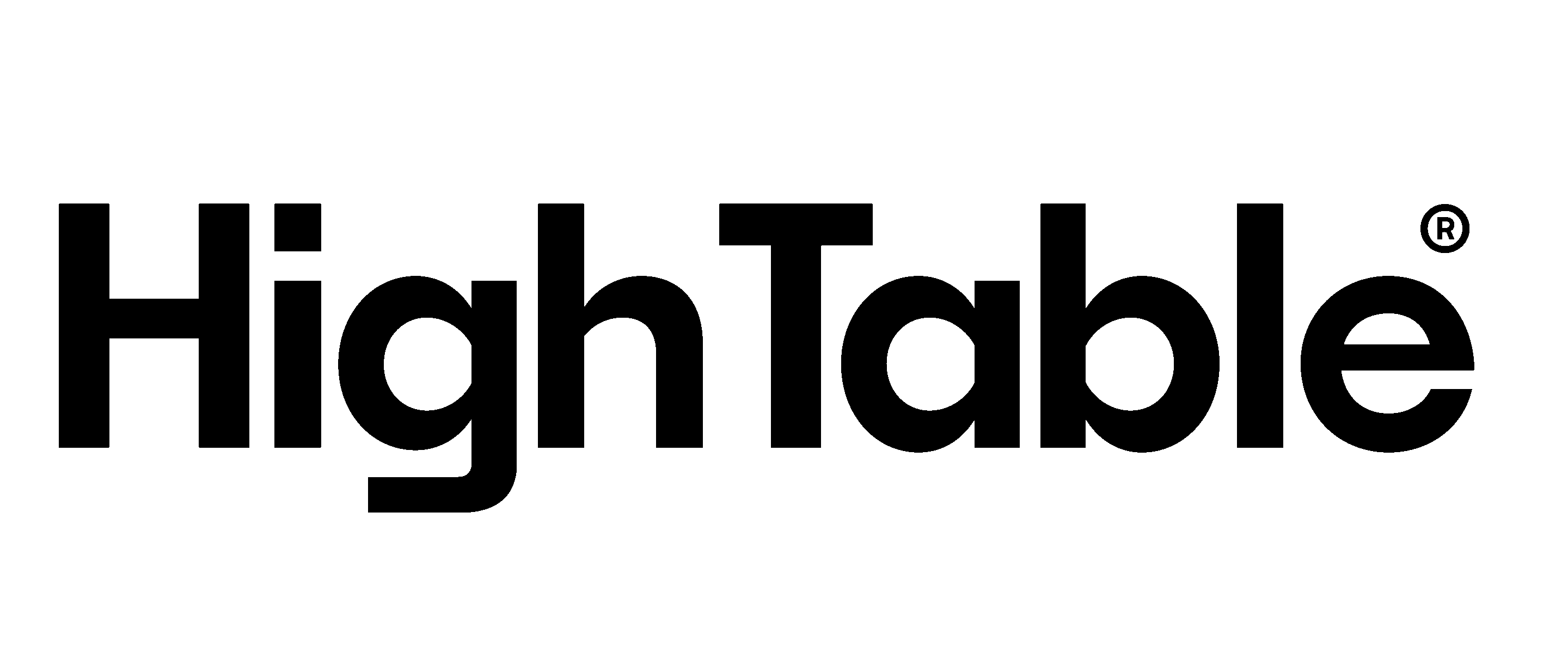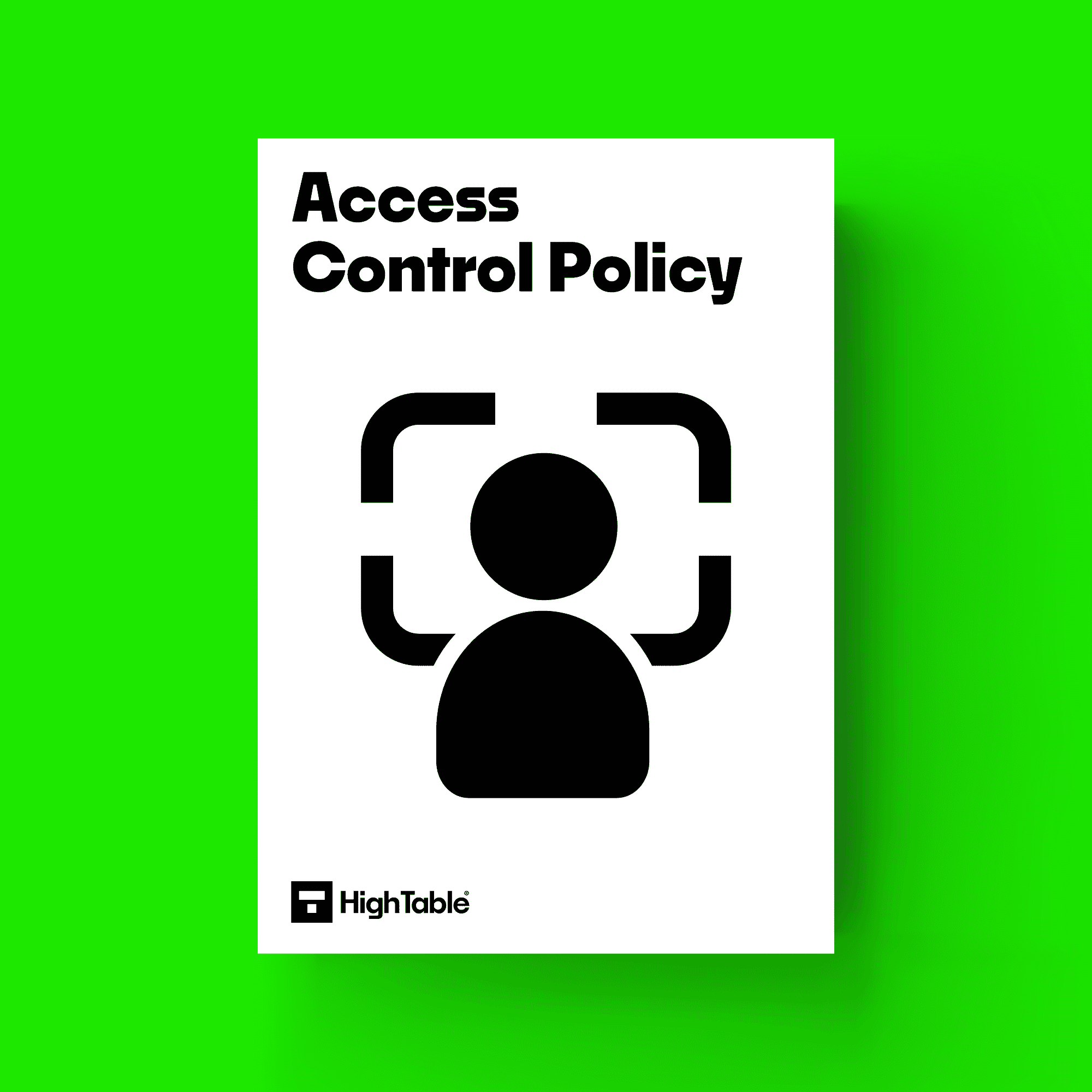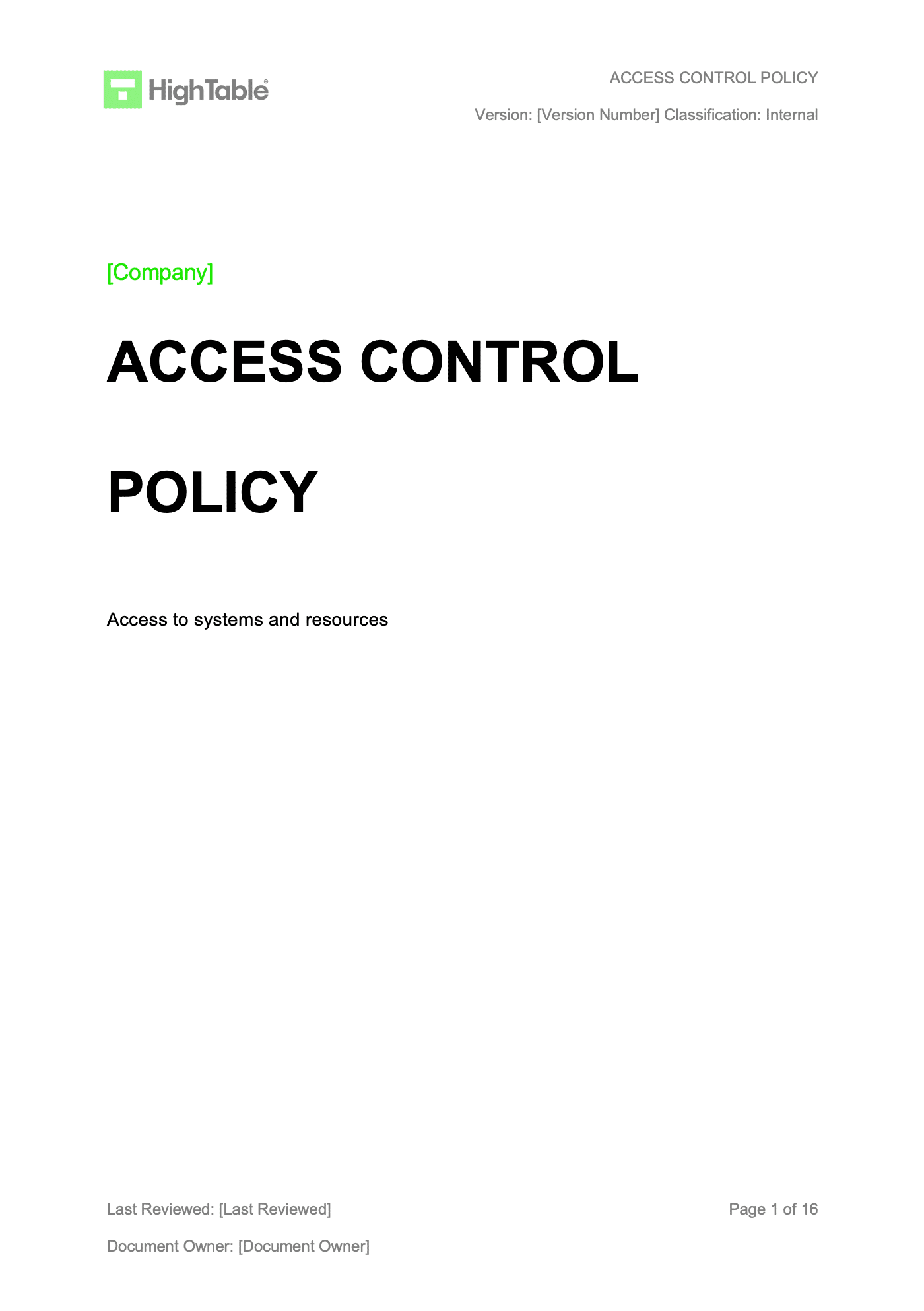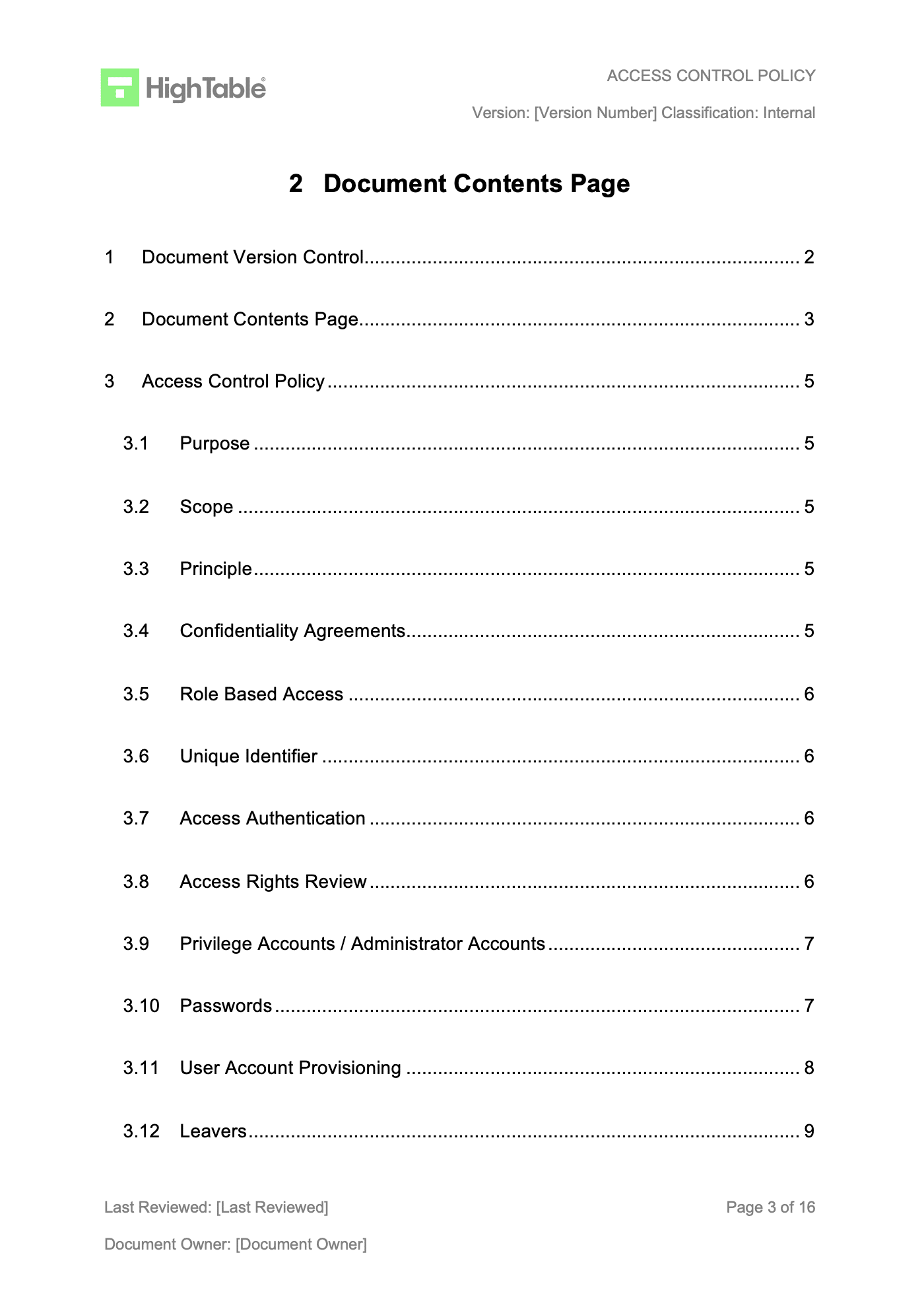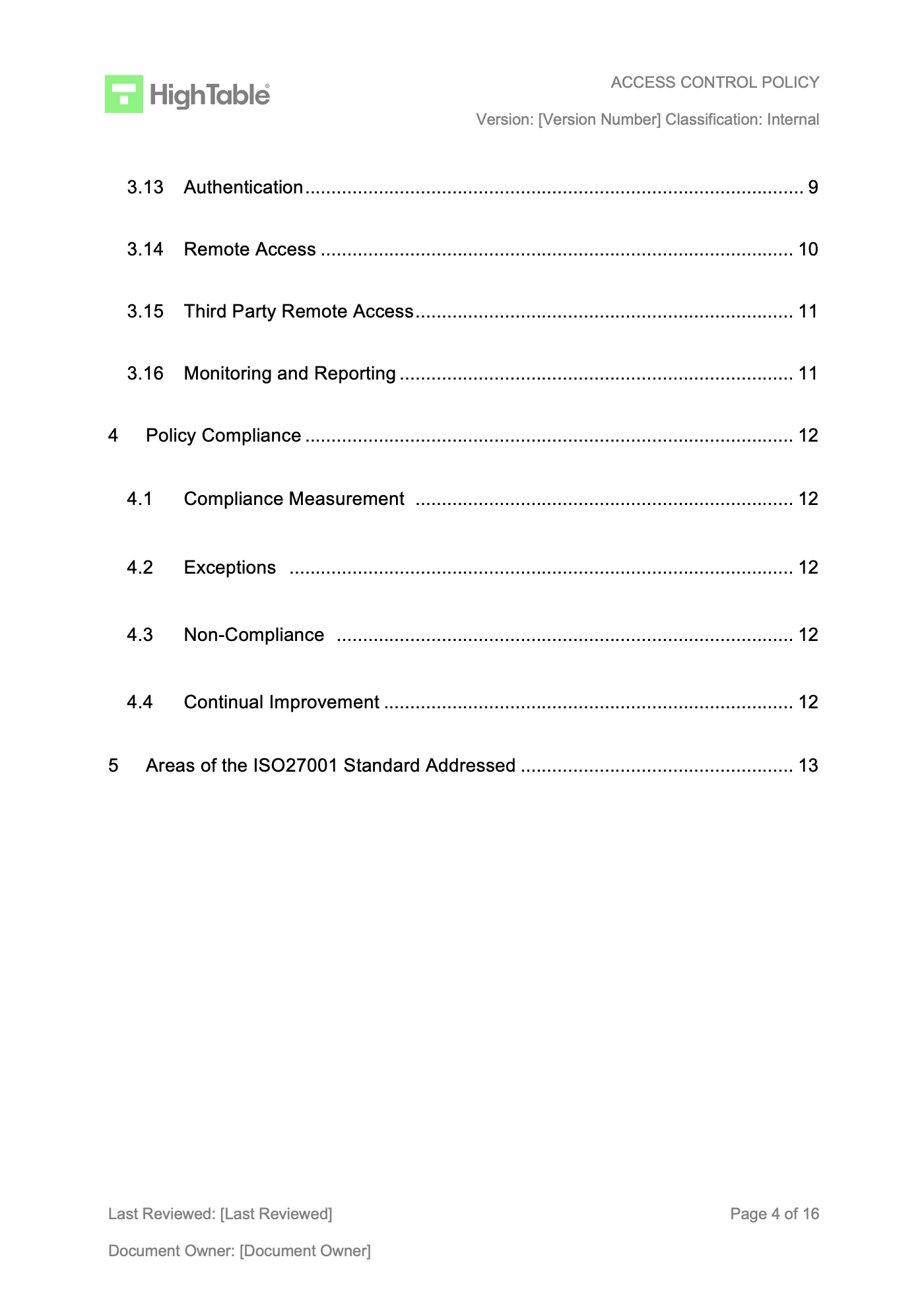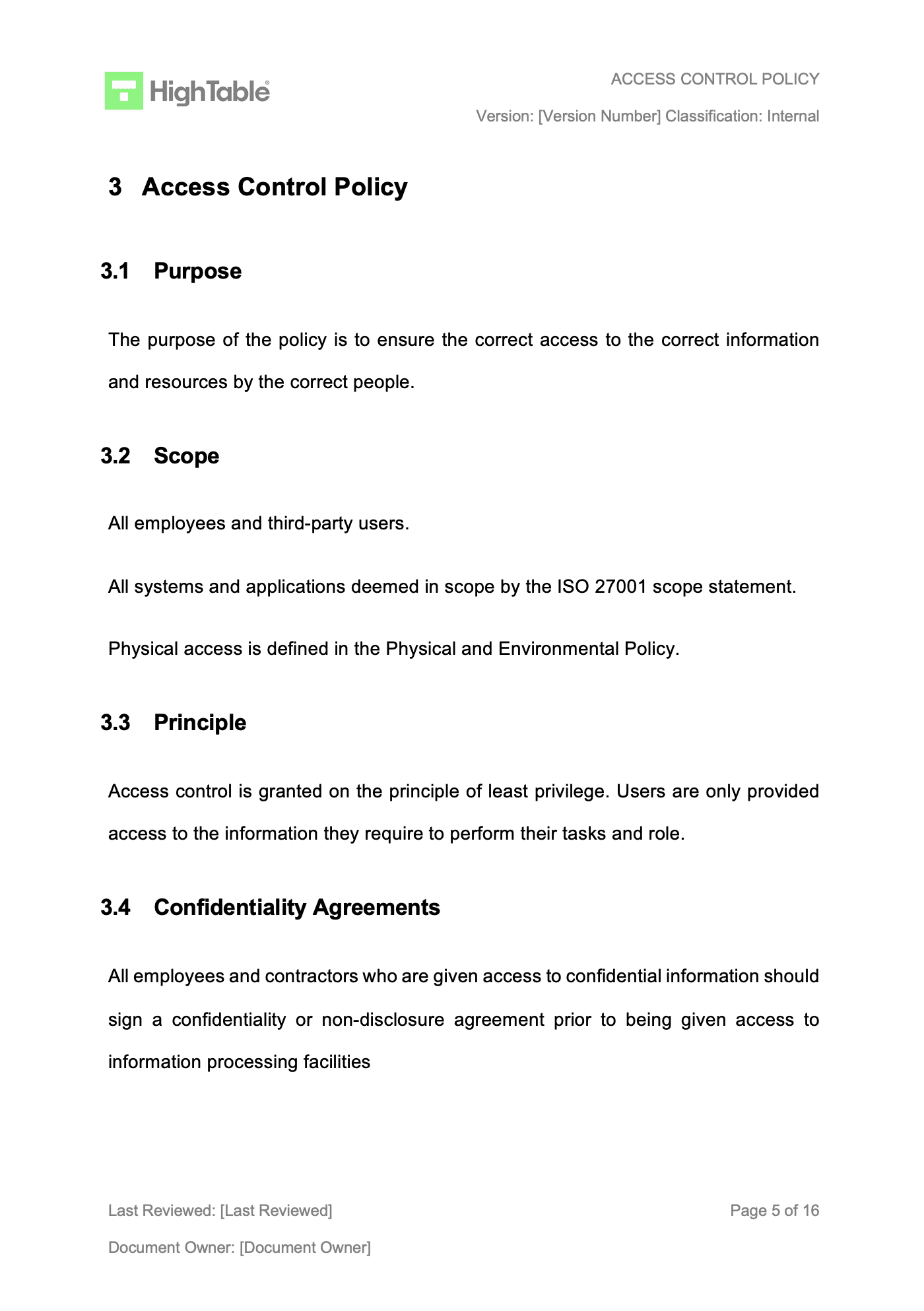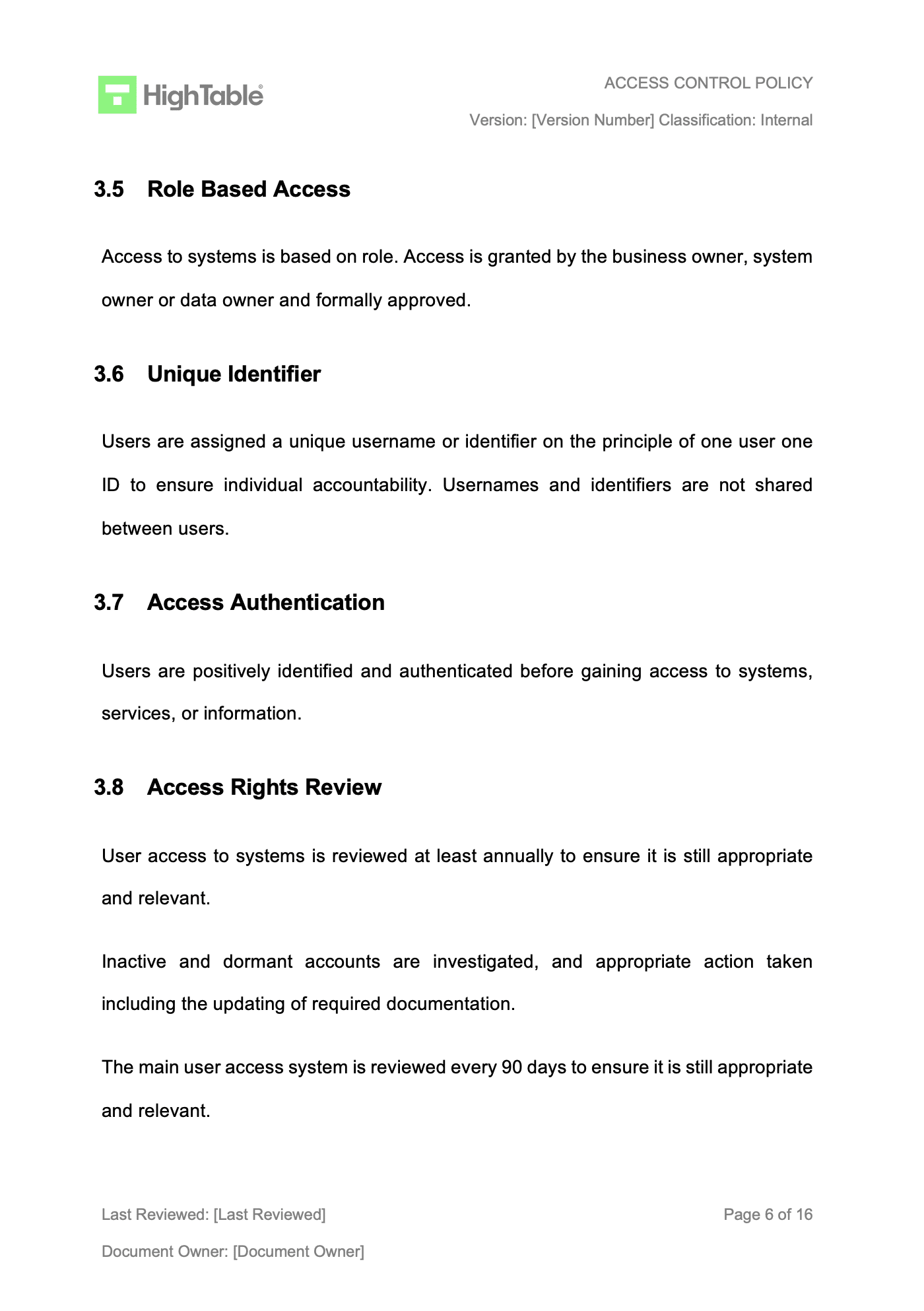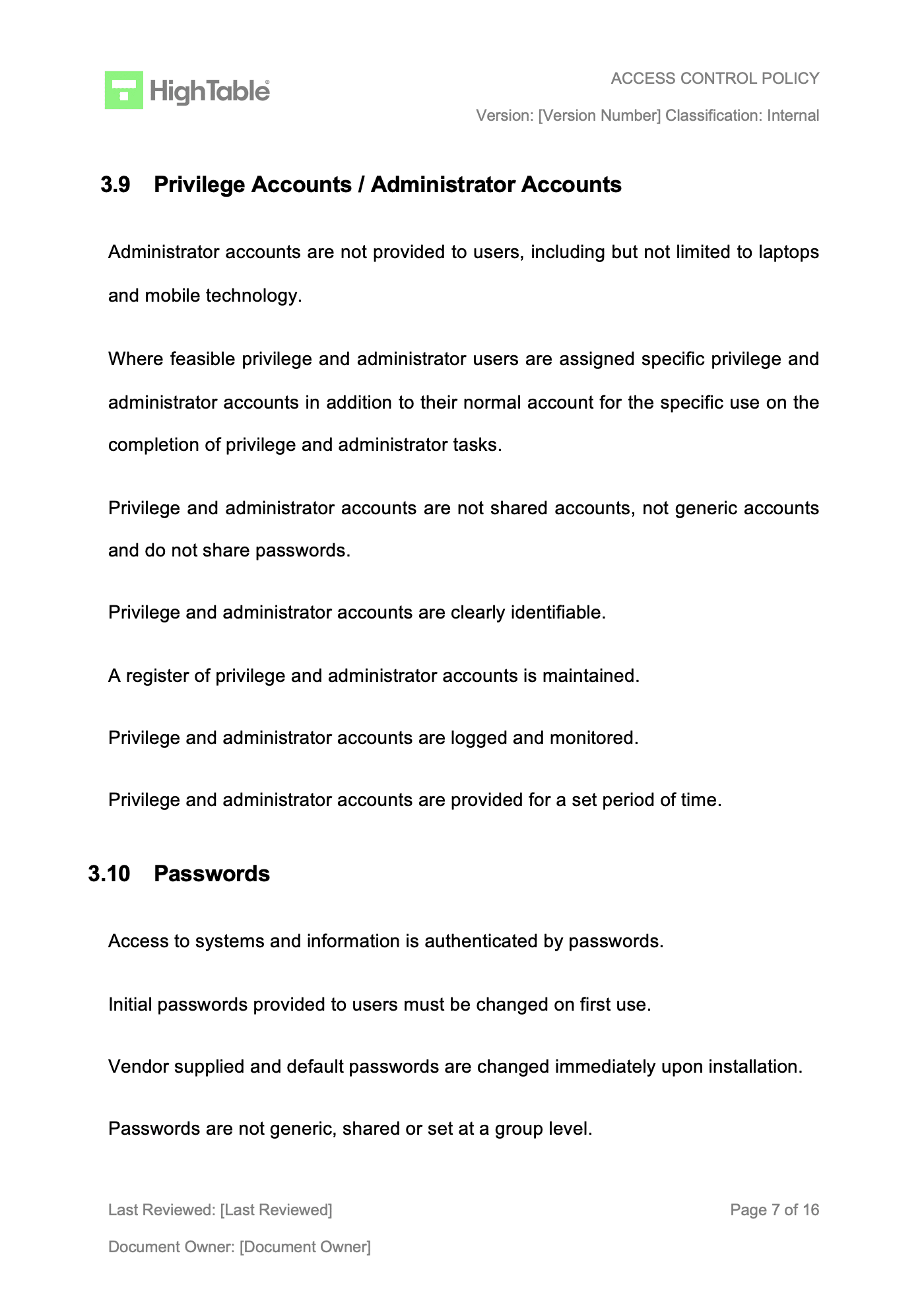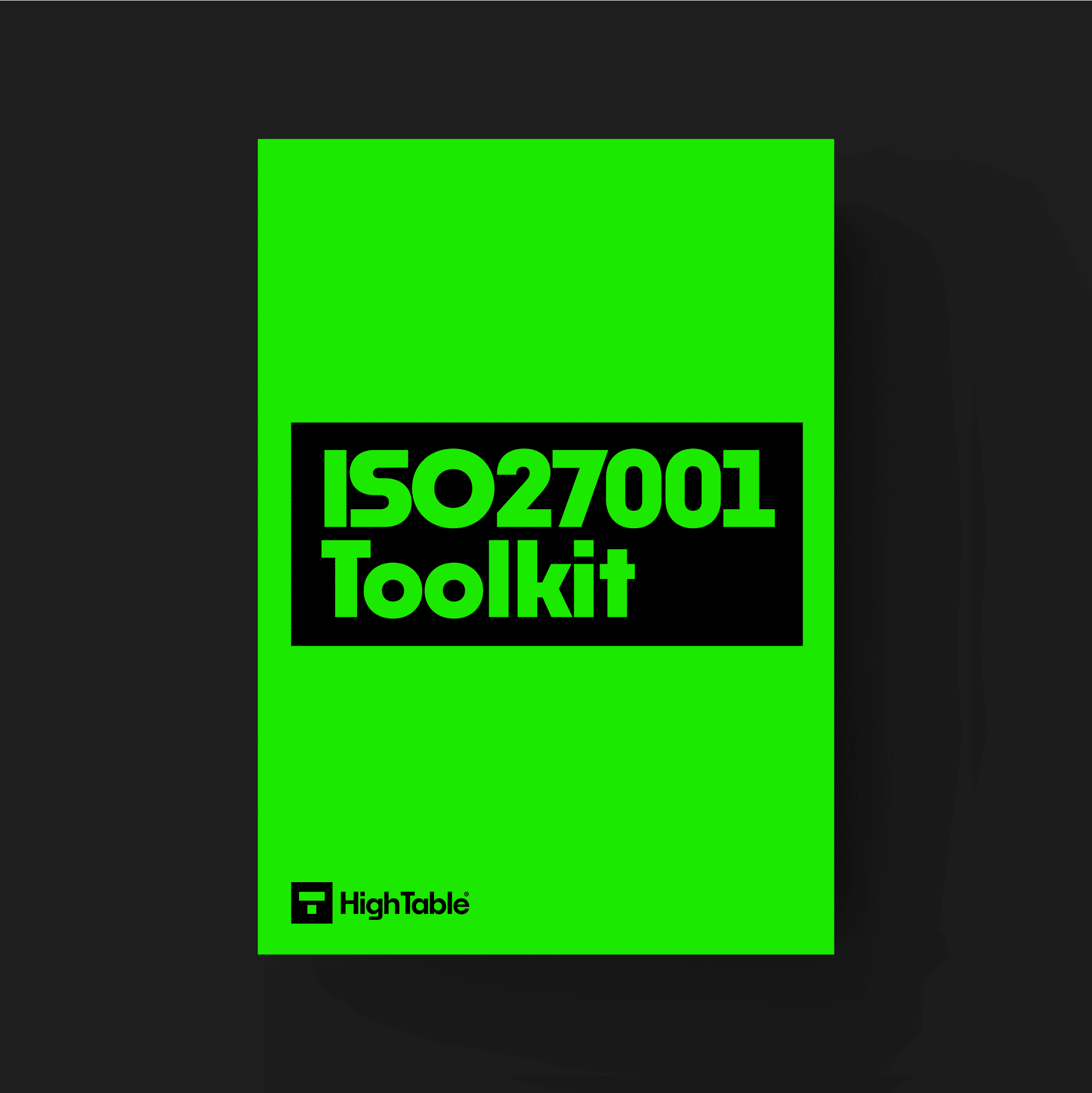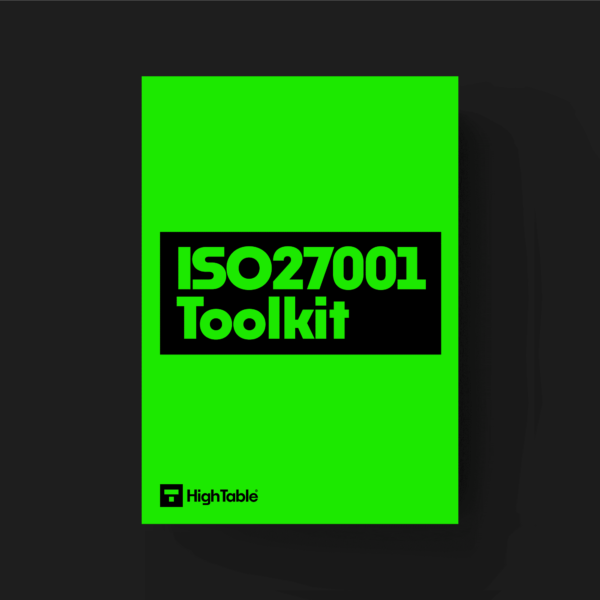The ISO 27001 Access Control Policy Template is like a security blueprint for your business, helping you decide and document exactly who gets to use what resources, when, and how. Think of it as creating a set of keys and rules for every door (physical and digital) in your company. It’s an essential part of getting your Information Security Management System (ISMS) right, especially if you’re aiming for ISO 27001 certification.
What is the ISO 27001 Access Control Policy Template?
This template is a pre-written, structured document that provides the rules for managing all access to your organisation’s information and systems. It covers the entire lifecycle of a user’s access:
- Giving access (onboarding a new employee).
- Managing access (changing an employee’s role).
- Revoking access (when an employee leaves).
It’s all about following the Principle of Least Privilege, which is a fancy way of saying: users only get the bare minimum access they need to do their job – nothing more.
Applicability to Small Businesses, Tech Startups, and AI Companies
The access control policy isn’t just for big corporations; it’s useful for businesses of all sizes, including small businesses, tech startups, and AI companies.
- Small Businesses: You need to protect customer data (like names, addresses, and payment info) and your financial records. A simple policy keeps unauthorised people (even within your own team) from seeing things they shouldn’t. It’s your first line of defense against costly data breaches.
- Tech Startups: Your Intellectual Property (IP) – your source code, algorithms, and product designs – is your most valuable asset. The policy ensures only the right developers can touch the main code repository, safeguarding your secret sauce from internal and external threats.
- AI Companies: You’re dealing with massive, often highly sensitive datasets (training data). This policy is critical for limiting access to that data, ensuring its integrity, and controlling who can access or modify your proprietary models. It helps manage the enormous risk that comes with big data.
Relevant ISO 27001 Controls
The following controls from the ISO/IEC 27001:2022 standard are related to access control:
- ISO 27001:2022 Annex A 5.15: Access control: This is the main control for managing access rights.
- ISO 27001:2022 Annex A 5.16:Identity Management: This covers the process of giving, changing, and removing user access.
- ISO 27001:2022 Annex A 5.17: Authentication Information: This control deals with how users prove who they are (e.g., with passwords or keycards)
- ISO 27001:2022 Annex A 5.18: Access rights: This control focuses on setting up and reviewing user access to systems.
- ISO 27001:2022 Annex A 8.2: Privileged Access Rights This is about controlling access for powerful accounts, like system administrators.
Why Do You Need This Policy?
You need this policy because it’s the rule book that keeps your sensitive information safe. Without it, you are exposed to huge risks:
- Data Breaches: If access isn’t controlled, an attacker (or a careless insider) can easily get to information they shouldn’t.
- Regulatory Fines: Standards like GDPR, HIPAA, and others require strict access controls. No policy means you could face massive penalties.
- Insider Threats: Whether it’s malicious activity or just a simple mistake, most breaches involve a legitimate user’s account. This policy minimises that risk.
- Audit Failure: If you’re going for ISO 27001, an auditor will demand to see this policy and how you follow it. Without it, you simply won’t pass.
When Do You Need to Have It in Place?
You need this policy right at the start of your ISO 27001 journey. It’s a foundational document. You should write and approve it:
- Before you start setting up user permissions in your systems.
- Before your ISO 27001 Stage 1 audit, where the auditor checks your documentation.
- Immediately after defining the scope of your ISMS, as access control is one of the most important things to scope.
Who Needs to Use and Follow the Policy?
Simply put, everyone needs to follow the Access Control Policy, but different groups have different roles:
- All Employees/Contractors: Everyone is a user and must follow the rules for passwords, using only the systems they’re allowed, and reporting security issues.
- Management/Department Heads: They often act as Access Owners who approve or reject access requests for their teams.
- IT/Security Team: They are the Access Administrators who implement the policy in the technical systems (like setting up accounts and revoking access).
- The Information Security Manager (or CISO): They own the policy, ensure it’s reviewed, and make sure everyone follows it.
How Do You Write a Good Access Control Policy?
Writing a great policy is about being clear and covering the essentials. Here are the key things to include:
- Purpose and Scope: Explain why the policy exists (to protect information) and what it applies to (all employees, systems, and data).
- Access Principles: Clearly state that you use the Principle of Least Privilege and Role-based access control (RBAC) – meaning access is given based on a user’s job role.
- User Access Management: Detail the process for the whole lifecycle:
- Onboarding: How is a new user’s access requested, approved, and granted?
- Changes: How is access modified when a user changes roles?
- Offboarding: How is all access immediately revoked when a user leaves the company?
- Special Access: Create strict rules for Privileged Access (like IT Administrator or Root accounts), including requiring multi-factor authentication (MFA) and special approval.
- User Authentication: Set your rules for passwords (strength, rotation) and mandate the use of MFA everywhere possible.
How Do You Implement the Access Control Policy?
A policy is just words until you put it into action!
- Map Roles to Access: Take every job role (e.g., “Salesperson,” “Junior Developer,” “Accountant”) and create a list of only the systems and data they are required to access.
- Configure Technical Controls: Use your tools (like Google Workspace, AWS, GitHub, HR system) to actually set those permissions based on the mapping you created.
- Use Multi-Factor Authentication (MFA): Enforce MFA for everyone, especially for accessing sensitive systems or privileged accounts.
- Regular Access Reviews: Set a schedule (e.g., every 90 days) for department heads to review their team’s access rights. They must confirm that everyone still needs the access they have. This prevents Privilege Creep.
- Train Your Team: Make sure all employees are trained on their responsibilities, especially regarding keeping their passwords secret and not sharing accounts.
Examples of Using It for Small Business
Imagine you run a small e-commerce company:
- Financial Data: The policy states only the Owner and the Accountant have read/write access to the QuickBooks or accounting system. A salesperson who processes an order cannot view the company’s profit/loss statement.
- Customer Contacts: Only the Sales and Support teams have access to the CRM (Customer Relationship Management) system with customer contact details. The warehouse staff, who only need to print shipping labels, are restricted to a separate system with just order numbers and shipping addresses.
Examples of Using It for Tech Startups
Imagine your startup is building a new mobile app:
- Source Code: The policy mandates that only Senior Developers can merge code into the main production branch in GitHub. Junior Developers only have access to their assigned feature branches. This prevents a single error from bringing down the whole app.
- Production Environment: Access to the live servers (AWS/Azure/GCP) is limited to a small group of DevOps engineers using Privileged Access Management (PAM) tools, and their access is time-limited and heavily logged.
Examples of Using It for AI Companies
Imagine you are training a large language model:
- Raw Training Data: The policy dictates that raw, sensitive training data (which might contain personal information) is stored in a separate, encrypted bucket. Only the Data Scientists on that specific project have temporary, role-based access. Other AI engineers who only work on model deployment are strictly denied access to the raw data.
- Model Intellectual Property: Only the research lead and CTO have access to the folder containing the final, proprietary model weight files. The rest of the team only has access to a deployment-ready copy that can’t be modified.
How the ISO 27001 Toolkit Can Help You
An ISO 27001 Toolkit is your biggest time-saver! It contains this policy pre-written for you. Instead of spending weeks trying to draft a complex policy from scratch, the toolkit gives you a compliant document where you only need to:
- Insert your company name and logo.
- Review the content.
- Adjust a few company-specific details (like your password rules).
This saves you countless hours and gives you confidence that your policy already covers all the required clauses of the ISO 27001 standard.
What Information Security Standards Need This Policy?
This access control policy is a key part of ISO 27001, which is an international standard for managing information security. Other standards that need it include:
- CCPA (California Consumer Privacy Act)
- DORA (Digital Operational Resilience Act)
- NIS2 (Network and Information Security (NIS) Directive)
- SOC 2 (Service Organisation Control 2)
- NIST (National Institute of Standards and Technology)
- HIPAA (Health Insurance Portability and Accountability Act)
- GDPR (General Data Protection Regulation)
ISO 27001 Access Control Policy Template FAQ
General Questions
1. Is the Access Control Policy the same as a Password Policy? No. The Access Control Policy is the high-level ruleabout who gets what access. The Password Policy is a specific rule about how a user proves they are who they say they are (e.g., minimum password length, MFA requirement).
2. Is this template mandatory for ISO 27001 certification? Yes, it is a core document required to meet the requirements of ISO 27001:2022, specifically for The Ultimate Guide to ISO 27001:2022 Annex A 5.15 Access Control.
3. What is “Role-Based Access Control” (RBAC)? It’s a method where access permissions are tied to a role (like “Marketing Manager”) instead of an individual person. It makes managing access much simpler and consistent.
4. What is “Privilege Creep”? This is when a user accumulates more access rights over time as they move to new roles, but their old rights are never taken away. A policy with regular reviews is designed to stop this.
5. How often must the policy be reviewed? You must review the policy at least annually and whenever a major change happens in your organisation or technology.
Implementation Questions
6. What’s the best tool to enforce this policy? An Identity and Access Management (IAM) system like Okta, Azure AD, or Google Workspace is best, as it lets you manage all user accounts and permissions from one central place.
7. Should I include rules for physical access? Yes! A complete Access Control Policy should cover both logical access (systems, data) and physical access (server rooms, offices) to sensitive areas.
8. Do I need separate policies for remote access? It’s a good idea to have a specific Remote Working Policy or a clear section in your Access Control Policy that details the secure methods (like VPN and MFA) required for remote access.
9. What is the “Need-to-Know” principle? It’s the core idea of this policy: users should only be able to access the information they absolutely need to know to complete their assigned duties.
10. How do I handle access for contractors or temporary staff? Your policy should state that contractor access must be time-limited, approved by a manager, and automatically revoked on their contract end date.
Business-Specific Questions
11. As a startup, can’t I just trust my small team? Trust is great, but a policy is about process. Even honest employees make mistakes. The policy protects your company by ensuring a clear process is followed, reducing the chance of accidental data loss.
12. For our AI company, how does this policy protect our models? It dictates that your proprietary algorithms and model weights are classified as “Highly Confidential” information, thereby enforcing the strictest access controls and encryption.
13. Does this policy cover granting access to external vendors? Yes, it should have a section on Third-Party Access, requiring formal contracts, restricted permissions, and regular reviews of vendor accounts.
14. What happens if an employee violates the policy? Your policy should clearly link to your Disciplinary Policy, outlining the consequences of non-compliance (from a warning up to termination).
15. What evidence do I need to show an auditor that I’ve implemented the policy? You’ll need to show evidence like: user access review logs, a register of privileged accounts, evidence of MFA enforcement, and proof of security awareness training for staff.
